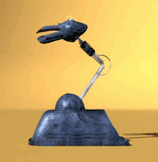This is probably something along the lines of melamine. Tape will help, but you may be able to limit it even more with some different techniques.
A high tooth count blade is an absolute must, the higher the better and a blade for fine wood cutting. This may limit it, but things will still be going against you.
The reciprocating action of these type cutting tools combined with the "flex" the blade itself has makes this very difficult to do without some tear out. There is also no kerf on these saws to assist the blade staying perpendicular to the work surface, which makes them more prone to flexing.
If I could make a suggestion it would be to test an area you're going to cut out anyway with the below ideas.
Use a utility knife with a new blade and score the laminate where you intend to cut it.
Extend or redo your current tape to include longer and finer drawn lines so that you can see it with a sacrificial board placed over it.
Position this bruise board (any flat 1/4, 3/8.... pine/plywood etc. scrap wood you have and clamp the two together on at least the top surface or bottom if your cutting upside down) and use the extended lines you drew to strike out a line on the bruise board as a cutting guide.
The bruise board will keep pressure a on top of the laminate surface, which will minimize flaking and tearing on the upstrokes of the blade, since it is being forced to stay down and has nowhere to move as a result of the blade action.
Every other blade tooth is angled toward the laminate on the blade during the upstroke, which will create a "picking" effect in rapid succession, the above will limit that since the laminate itself is trapped between the two pieces of wood.
These give some idea of what I'm trying to describe above.







